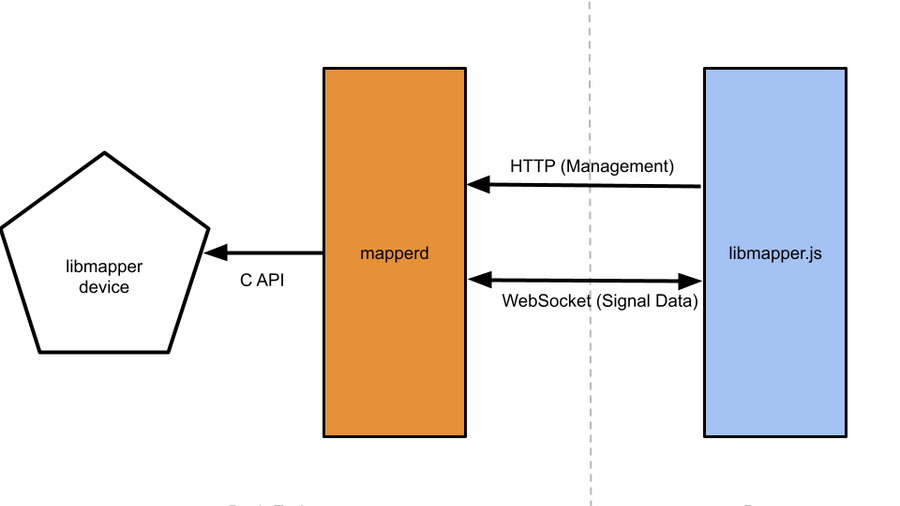~ 2 min read
Extending Networked Mapping Research Middleware into the Browser Sandbox

Publication Details
This paper appeared at the 2024 International Symposium on the Internet of Sounds in Earlangen, Germany.
Paper Link: https://ieeexplore.ieee.org/abstract/document/10704162
Summary
This paper presents a new method for bringing the libmapper ecosystem to the modern web-browser. Libmapper relies on the TCP/IP stack which due to security practices is not avaliable directly within a browser sandbox. To get around this, we present a two part architecture that includes a front-end JavaScript library which is responsible for communicating with a backend daemon.
This project is open source. Take a look at this link for more information.
Authors
Matthew Peachey, Kyle Smith and Joseph Malloch
Abstract
Web-based technologies have seen rapid technologi-cal improvements over the past several decades. This is especially true as it relates to audio applications, with the specification of the WebAudio API enabling users to deploy highly performant audio projects to the web. Existing literature describes how mappings are a critical component of end-to-end audio projects, including Digital Musical Instruments, Internet of Sounds devices, and more. Due to this, years of research efforts have produced mapping middleware for the facilitation of establishing mappings between sources and destinations. This paper discusses how the libmapper ecosystem is extended to support mapping to and from a sandboxed browser environment. Establishing libmapper connectivity on the web is achieved through websockets and a backend daemon. In this paper, we discuss the implementation details of binding libmapper to the web as well discuss potential use-cases via user-story driven scenarios.